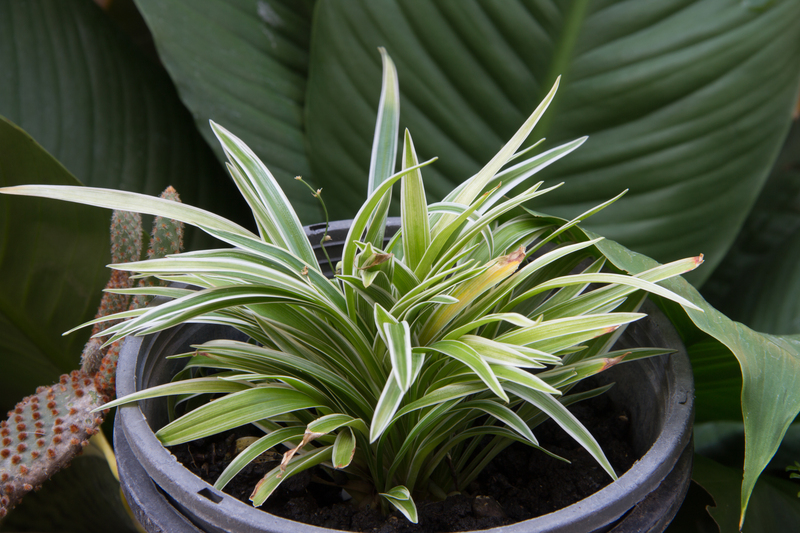Adapt and Protect: Your Garden's Defense Against Severe Weather
Posted on 03/10/2025
Adapt and Protect: Your Garden's Defense Against Severe Weather
Gardening is a rewarding pursuit, but when Mother Nature's fury strikes, your hard work can be undone in mere minutes. Facing unpredictable storms, heatwaves, droughts, floods, or frosts requires you to adapt and protect your garden efficiently. In this comprehensive guide, we'll help you create a robust defense against severe weather, ensuring your garden not only survives but thrives under challenging conditions.

Understanding Severe Weather Threats to Your Garden
Every region faces specific climate extremes, but all gardeners should be armed with basic knowledge about severe weather hazards including:
- Heavy Rainfall and Flooding: Causes soil erosion, root rot, and plant displacement.
- High Winds and Storms: Uproot plants, break branches, and scatter debris.
- Extreme Heat and Drought: Leads to dehydration, sunscald, and plant stress.
- Freezes, Frosts, and Snow: Kill tender growth and damage structures.
- Hailstorms: Shred leaves and bruise fruits and stems.
Your first step in adapting your garden to weather extremes is to identify which threats are most likely in your area - and to prepare accordingly.
Garden Design: The Foundation of Weather Resilience
A garden that is well-designed for resilience will resist weather damage better than a conventional layout. Consider these key principles:
- Windbreaks and Shelterbelts: Hedges, fences, or dense shrubs can be planted to buffer strong winds, reducing their impact on fragile plants.
- Raised Beds and Berms: These structures elevate plants above saturated soils during heavy rains or floods, improving drainage.
- Permeable Pathways: Gravel, woodchip, or brick paths allow rain to percolate, minimizing runoff and erosion.
- Diverse Planting: A mixture of perennials, shrubs, and annuals increases your garden's resilience, as different species can withstand different extremes.
Strategically designing your garden not only improves its appearance but gives it a fighting chance against severe climate disruptions.
Preparing Your Garden for Storms and Heavy Rain
Soil Erosion Control
Unprotected soil is vulnerable to being washed away during torrential downpours. Take these precautions:
- Apply mulch (wood chips, straw, compost) to absorb rainfall and protect soil surface.
- Install groundcovers like creeping thyme or clover to anchor the soil with their roots.
- Build swales or rain gardens to redirect and absorb excess water.
Drainage Solutions
Address areas that commonly flood by:
- Amending soil with organic matter for improved drainage.
- Creating slopes away from structures using gentle grading.
- Adding French drains or dry wells to collect and disperse water.
Plant Placement and Supports
Invest in the right supports to keep plants standing tall during storms:
- Stake young trees and tall flowers.
- Trellis vining plants securely to withstand wind and heavy rain.
- Position vulnerable plants in sheltered locations, such as near fences or walls.
Weathering the Wind: Protecting Your Garden from Storm Damage
High winds can be devastating for even the most established gardens. Here's how to minimize the damage:
- Windbreaks: A row of dense shrubs, trees, or a solid wooden fence positioned on the prevailing wind side offers essential protection. Try using evergreens (like arborvitae or juniper), or bamboo for faster results.
- Netting: Use heavy-duty garden netting to shield delicate crops from debris and wind shear.
- Pruning: Regularly prune dead, weak, or overcrowded branches to lessen wind resistance and the risk of breakage.
Supporting your plants is not just about staking; it's about thinking ahead and placing vulnerable varieties in pockets of natural protection.
Dealing with Extreme Heat and Drought Conditions
Water-Wise Gardening Techniques
Adapt your garden to hot, dry spells with water conservation strategies:
- Install drip irrigation systems to provide deep, targeted moisture directly to plant roots.
- Water early in the morning or late evening to minimize evaporation losses.
- Utilize mulches (2-3 inches deep) to cool the soil and reduce water needs.
Heat Tolerant Plants for Modern Gardens
Choose resilient species that thrive in your climate. Examples include:
- Lavender, salvia, and yarrow for perennials.
- Succulents and cacti for arid settings.
- Drought tolerant vegetables like okra, peppers, and sweet potatoes.
These plants actively contribute to your garden's severe weather defense by enduring conditions that less adapted species cannot.
Frost, Freeze and Winter Weather Defense
Seasonal Preparation is Key
When frost warnings loom, quick action can save your plants:
- Cover tender plants with frost cloths, burlap, or old sheets at night and remove them by morning.
- Use cold frames or mini greenhouses to shelter vulnerable crops.
- Mulch around perennials to insulate roots through freezes.
Selecting Hardy Varieties
When possible, prioritize winter-hardy vegetables and perennials in your planting plan:
- Kale, Brussels sprouts, and spinach (vegetables).
- Hostas, daylilies, and spring bulbs for perennials.
Cold-hardy plants are less likely to suffer severe dieback even after unexpected snow or ice.
Hail Protection for a Resilient Garden
Hail and ice pellets can shred plants in minutes. Here's how to shield your garden:
- Temporary shelters: Keep tarps, row covers, or rigid cloches on hand to cover crops ahead of a storm.
- Permanent covers: Use hail netting over key beds or install polycarbonate sheets for vulnerable greenhouses.
- Sturdy supports: Ensure all covers are well-secured to prevent wind blow-off.
Creating a Garden Emergency Plan
Every gardener should have an action plan for sudden severe weather. Your garden defense strategy might include:
- Routine weather checks: Stay informed with local forecasts and weather alerts.
- Emergency kit: Store frost cloths, stakes, and tarps in an accessible place.
- Quick response system: Know which plants and structures are top priority to shield, cover, or secure fast.
Proactive steps before disaster strikes can be the difference between saving your harvest and starting anew.
Long-Term Strategies: Building a Climate-Resilient Garden
Soil Health is Your Strongest Defense
Healthy soil holds water better during droughts, drains efficiently in floods, and nurtures robust root systems that withstand stress. Practice these habits:
- Add compost year-round for nutrients and microbe diversity.
- Rotate crops to balance nutrient usage and disrupt pests.
- Encourage worms and beneficial insects with organic matter and minimal chemicals.
Embrace Native and Adapted Plants
Native species are uniquely suited to your region's climate trends. They'll stand up to most extremes with less effort than exotics. Similarly, seek out adapted cultivars bred for your USDA hardiness zone and rainfall patterns.
Diversification Reduces Risk
A diverse garden layout spreads risk across different species and root depths. Even if some plants are lost to one weather event, others may pull through, keeping your landscape lush and productive.
Resilient Infrastructure
Permanent structures, such as raised beds, wind fencing, rain barrels, and greenhouses, can help shield your garden over many seasons. Invest in quality materials and inspect for weaknesses regularly.

Eco-Friendly Practices for Severe Weather Adaptation
Taking a sustainable approach will not only protect your garden but benefit your local ecosystem as well.
- Capture rainwater in barrels to use during droughts and avoid overtaxing municipal supplies.
- Plant trees for shade, wind shelter, and carbon sequestration.
- Reduce lawn areas in favor of beds, shrubs, and wildflower meadows--a more weather-resistant and pollinator-friendly environment.
These techniques not only help your garden recover from severe weather but also foster a healthier, more resilient neighborhood landscape.
Conclusion: Be Ready to Adapt and Protect Your Garden from Severe Weather
Climate change and unpredictable weather are the new reality for home gardeners. But with planning, you can adapt your garden to withstand severe weather and recover quickly from setbacks. Focus on smart design, proper plant selection, sturdy structures, and soil health to establish a solid defense. Stay proactive, learn from each season, and turn every challenge into a chance for improvement.
Your garden, fortified by preparation and resilience, will reward you year after year--whatever the weather may bring.
Adapt and protect--because a thriving garden is one that endures.

